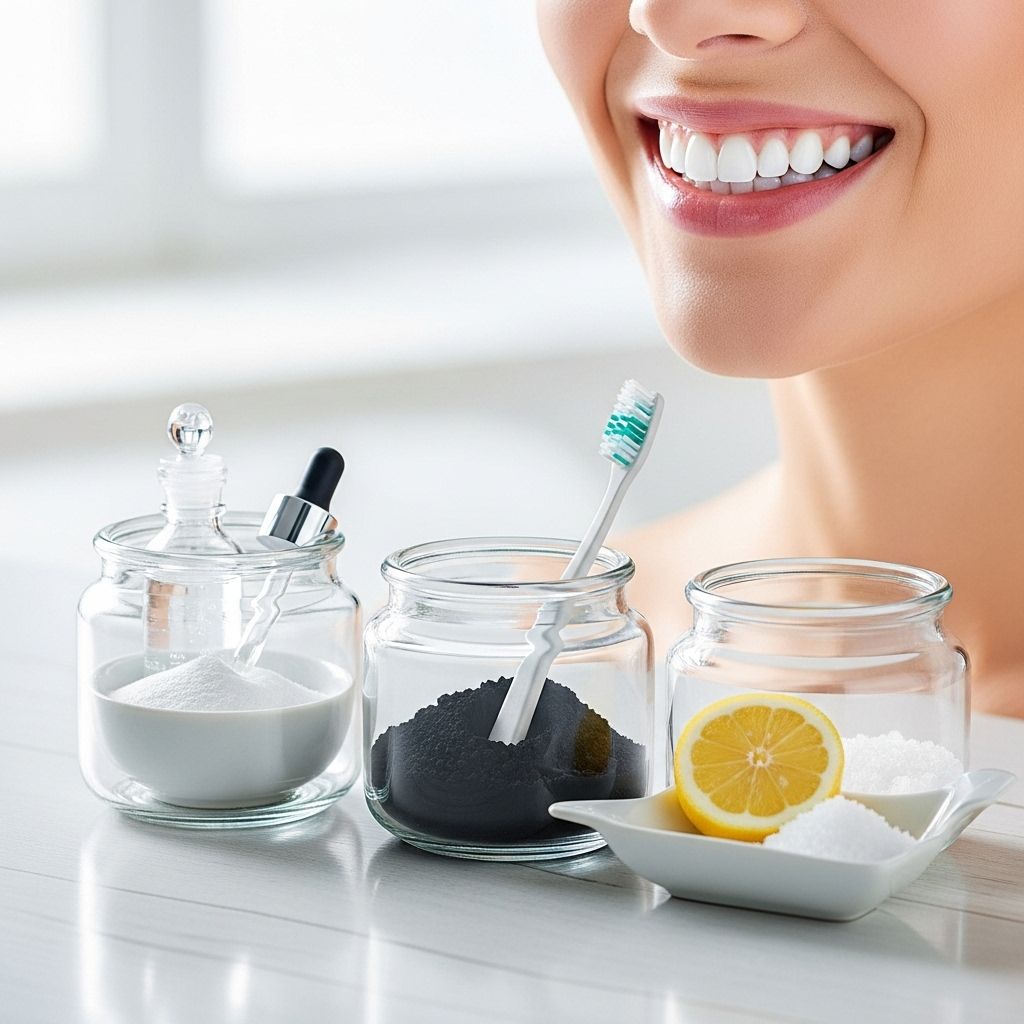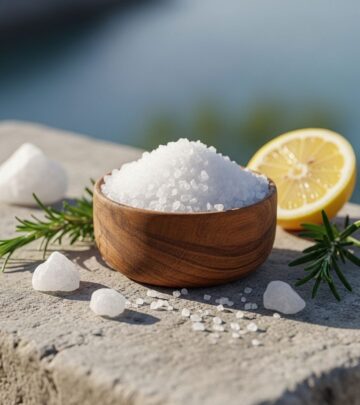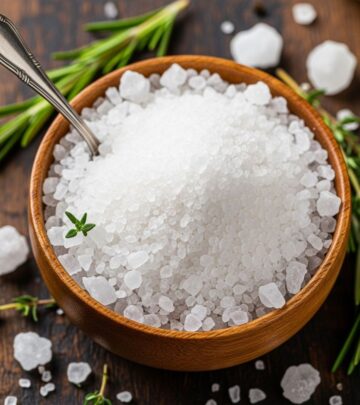Best Ways To Use Hydrogen Peroxide For Teeth Whitening
A cost-effective smile regimen that delivers lasting brightness while caring for enamel.

A brilliant white smile remains one of the most sought-after features in personal appearance, fueling the popularity of teeth-whitening products and remedies. Among home remedies, hydrogen peroxide stands out for its accessibility, cost-effectiveness, and recognized bleaching properties. This article examines how hydrogen peroxide whitens teeth, how to use it safely, its effectiveness compared to other options, and the potential risks and precautions you should be aware of.
How Does Hydrogen Peroxide Whiten Teeth?
Hydrogen peroxide acts as a mild bleaching agent for teeth. When applied to tooth enamel, it penetrates and initiates a chemical process called oxidation. This breaks down chromogenic compounds (pigments responsible for staining), making stains less visible and revealing a lighter shade. Hydrogen peroxide is commonly found in concentrations of 3% to 9% in over-the-counter dental products, though professional whitening may use higher strengths up to 40% under strict supervision.
- Acts on Extrinsic Stains: Removes surface stains caused by coffee, tea, wine, foods, and tobacco.
- Penetrates Enamel: Reaches some intrinsic discolorations beneath the surface, brightening deeper enamel layers.
- Oxidative Action: Breaks down colored molecules through oxidation, facilitating whitening.
Benefits of Using Hydrogen Peroxide for Teeth Whitening
Hydrogen peroxide is not only inexpensive and widely available but is also a core ingredient in many commercial whitening strips, gels, and toothpastes.
- Accessibility: Easily purchased from pharmacies or supermarkets.
- Cost-Effectiveness: Cheaper than professional whitening treatments.
- Multiple Application Forms: Available as mouth rinses, pastes, whitening strips, and over-the-counter gels.
- Proven Efficacy: Studies show that 6% hydrogen peroxide used daily for two weeks is effective for noticeable whitening.
- ADA Approval: When used as directed and at safe concentrations, hydrogen peroxide enjoys support from dental associations such as the ADA.
How to Safely Use Hydrogen Peroxide for Teeth Whitening
To maximize whitening benefits and minimize risks, hydrogen peroxide should be used with caution and according to evidence-based guidelines.
1. Hydrogen Peroxide Mouth Rinse
- Mix: Dilute 3% hydrogen peroxide with equal part water (1:1 ratio).
- Rinse: Swish the mixture around your mouth for up to 30 seconds. Do not swallow.
- Rinse Well: Spit out the mixture and rinse thoroughly with plain water to remove residual peroxide.
2. Hydrogen Peroxide and Baking Soda Paste
- Mix: Combine a small amount of 3% hydrogen peroxide with enough baking soda to form a thick paste.
- Apply: Use a toothbrush to apply the paste gently to your teeth, brushing for 1–2 minutes.
- Rinse Thoroughly: Do not swallow the paste; rinse your mouth and toothbrush well with water.
- Frequency: Use a few times per week, not daily, to avoid enamel abrasion or irritation.
3. Over-the-Counter Whitening Products
- Whitening Strips and Gels: These usually contain hydrogen peroxide concentrations between 3% and 10%, designed for specific durations and safe home use.
- Toothpastes: Whitening toothpastes may include low concentrations of hydrogen peroxide, intended for daily brushing without exceeding safety thresholds.
- Follow Directions: Always use these products as described by the manufacturer or your dentist, as overuse increases risk of sensitivity and gum irritation.
Table: Comparison of Whitening Methods
| Whitening Method | Average Effective Concentration | Effectiveness | Safety | Application |
|---|---|---|---|---|
| Hydrogen Peroxide Rinse/Paste | 3% (diluted) | Moderate | Safe if used as directed | DIY at home |
| Whitening Strips/Gels | 3–10% | High | Safe as directed | Home use |
| Professional Whitening | 30–40% | Very high | Very safe under supervision | Dentist office |
| Baking Soda (Alone) | N/A | Mild (surface stains) | Safe with moderation | Home use |
Risks and Potential Side Effects
While hydrogen peroxide is generally recognized as safe for short-term and low-concentration dental use, overuse or misuse can lead to adverse effects:
- Tooth Sensitivity: Frequent or prolonged exposure can increase tooth sensitivity by weakening enamel.
- Gum Irritation: Undiluted or concentrated solutions may irritate or burn gum tissues.
- Enamel Damage: High concentrations or overuse can result in permanent enamel breakdown, making teeth more vulnerable to decay.
- Upset Stomach: Swallowing peroxide (even in small quantities) can cause gastrointestinal irritation or nausea.
Precaution: Never use higher than 6% hydrogen peroxide concentrations at home, never swallow, and always discontinue use if you notice burning, extreme sensitivity, or white spots forming on gums or teeth.
Natural Alternatives To Hydrogen Peroxide
Other natural remedies for teeth whitening exist, though they may be less effective or more abrasive:
- Baking Soda: Removes some surface stains by physical abrasion but is less potent as a stand-alone whitening agent.
- Activated Charcoal: Popular in oral care trends, though research on safety and effectiveness is limited, and it can potentially wear down enamel over time.
- Oil Pulling: Swishing coconut oil for 10–20 minutes may help reduce bacteria and buildup, but evidence for significant whitening is lacking.
Professional vs. At-Home Whitening: What’s Best?
Both at-home and professional whitening methods use hydrogen peroxide but differ in approach, concentration, and safety controls.
- At-Home Methods: Use lower concentrations, are cost effective, and offer gradual whitening. Proper technique is essential to avoid irritations and enamel wear.
- Professional Whitening: Dentists use higher-concentration gels in a controlled environment, usually producing more dramatic, even results. Supervision ensures minimal risk of enamel damage and gum injury.
For deep, persistent intrinsic stains—often caused by medication, trauma, or aging—professional whitening is recommended. For surface stains, at-home regimens can work well if performed carefully.
Important Dos And Don’ts for Hydrogen Peroxide Whitening
- Do consult your dentist before starting any whitening treatment, especially if you have existing dental work (like crowns or fillings).
- Do stick with approved concentrations (maximum 6% for home use).
- Do follow instructions precisely and limit use to 1–2 weeks at a time.
- Don’t swallow hydrogen peroxide or let it remain in your mouth longer than recommended.
- Don’t use if you have open sores, inflamed gums, or untreated cavities.
- Don’t use daily for extended periods due to risk of enamel erosion.
Frequently Asked Questions (FAQs)
Q. How often can you use hydrogen peroxide to whiten teeth?
A. Limit use to once daily for up to 1–2 weeks at a time, then take breaks to avoid enamel or tissue irritation. Consult your dentist for a regimen suited to your tooth health.
Q. Does hydrogen peroxide work on all types of tooth stains?
A. Hydrogen peroxide works best on extrinsic stains from foods and drinks. Deeper intrinsic stains (due to genetics, trauma, or certain medications) are less responsive and may need professional intervention.
Q. Can hydrogen peroxide be mixed with baking soda or toothpaste?
A. Yes, mixing 3% hydrogen peroxide with baking soda creates a mildly abrasive and whitening paste. However, avoid excessive use, as baking soda and peroxide can erode enamel when used too often.
Q. Is it safe to use hydrogen peroxide if I have sensitive teeth?
A. People with sensitive teeth should consult a dentist before trying peroxide whitening, as it may exacerbate sensitivity or lead to further discomfort. Always use the lowest effective concentration and limit frequency.
Q. Do over-the-counter hydrogen peroxide products provide the same results as professional whitening?
A. Over-the-counter products can noticeably whiten teeth but are less effective and act more slowly than dentist-supervised treatments. Results also tend to be more variable and less long-lasting.
Q. What should I do if I experience irritation while using hydrogen peroxide?
A. Discontinue use immediately and rinse your mouth thoroughly with water. If irritation persists, seek dental advice. Never use hydrogen peroxide on broken skin, open sores, or inflamed gums.
Tips for Maintaining White Teeth After Whitening
- Practice daily oral hygiene—brush twice a day and floss to remove new stains and prevent plaque buildup.
- Limit consumption of staining substances (coffee, tea, red wine, dark berries, tobacco).
- Use a straw to minimize contact with staining fluids.
- Consider touch-up whitening every few months for maintenance, but avoid excessive frequency.
- Visit your dentist regularly and notify them of any changes to your tooth sensitivity or coloration.
When Should You Avoid Hydrogen Peroxide Whitening?
- If you have active tooth decay, untreated cavities, or exposed roots.
- During pregnancy or breastfeeding (insufficient safety data).
- If you experience frequent ulcers, gum disease, or tissue sensitivity.
- If you have dental appliances that do not respond to peroxide (crowns, fillings, veneers).
Conclusion
Hydrogen peroxide, when used appropriately, offers a low-cost and accessible option for achieving a brighter smile from home. However, your long-term oral health should always take priority. Consult with a dental professional before starting any whitening regimen, especially if you have preexisting dental concerns. Use only recommended concentrations, follow safety instructions, and monitor for side effects. For optimal results and safety, consider professional whitening if you desire more profound changes, and maintain diligent oral hygiene practices to keep your smile looking its best.
References
- https://www.healthline.com/health/hydrogen-peroxide-teeth-whitening
- https://www.dentalstudio920.com/post/does-hydrogen-peroxide-whiten-teeth
- https://www.gentledental.com/resources/articles/hydrogen-peroxide-teeth-whitening
- https://www.mountairyfamilydentistry.com/blog/does-hydrogen-peroxide-whiten-teeth
- https://www.medicalnewstoday.com/articles/326148
- https://pmc.ncbi.nlm.nih.gov/articles/PMC4058574/
- https://www.ada.org/resources/ada-library/oral-health-topics/whitening
- https://www.hicksdentalgroup.com/whiten-teeth-with-hydrogen-peroxide/
Read full bio of Sneha Tete











